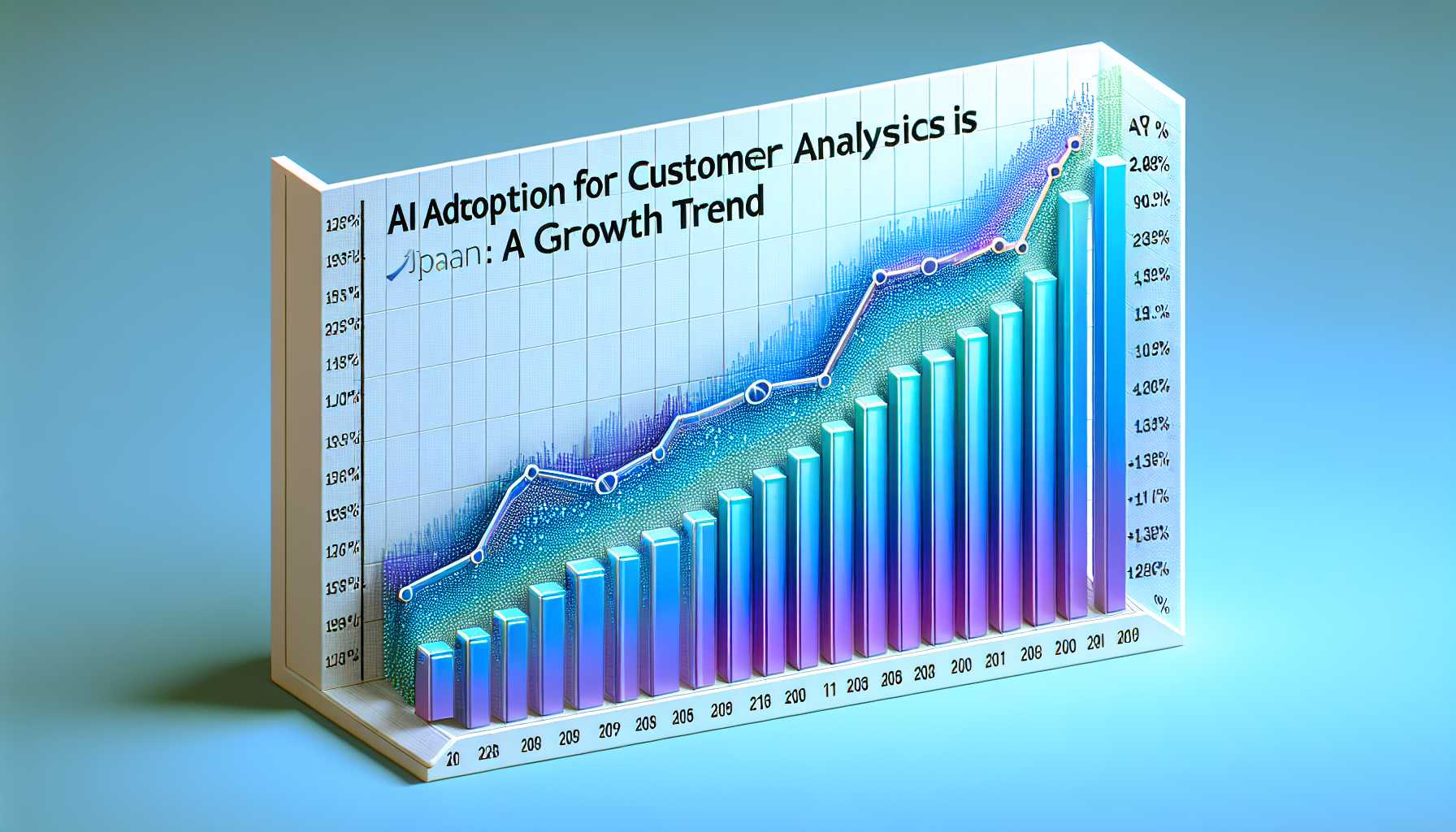The Rise of AI in Customer Analytics: A Look at Japan’s Adoption

The use of artificial intelligence (AI) for customer analytics is experiencing explosive growth in Japan. A recent study by the Japan External Trade Organization (JETRO) revealed that 40% of Japanese businesses are already leveraging AI for customer analytics, with this number projected to reach 60% by 2025.
Key Drivers of AI Adoption
- Enhanced Customer Understanding: AI empowers businesses to delve deeper into customer behavior, preferences, and needs, enabling them to refine customer service, develop targeted products and services, and optimize marketing campaigns.
- Task Automation: AI automates tasks like customer service, data analysis, and marketing, freeing up employees to focus on strategic initiatives like product development and customer service improvement.
- Improved Decision-Making: AI analyzes data to identify patterns and trends that might otherwise go unnoticed, providing valuable insights for informed decision-making in areas like pricing, marketing, and overall business operations.
Key Statistics
- 40% of Japanese businesses currently utilize AI for customer analytics.
- This adoption rate is expected to reach 60% by 2025.
Benefits of AI-powered Customer Analytics
- Deeper Customer Understanding: Gaining insights into customer behavior, preferences, and needs.
- Task Automation: Freeing up employees for strategic initiatives.
- Enhanced Decision-Making: Identifying patterns and trends for informed business decisions.
Challenges of AI-powered Customer Analytics
- Data Privacy Concerns: Ensuring customer data protection when using AI.
- Skilled Workforce Shortage: Addressing the lack of skilled professionals to develop and implement AI solutions.
- Cost: The potential expense of developing and implementing AI solutions.
Conclusion
The use of AI for customer analytics is a burgeoning trend in Japan, with the potential to revolutionize business operations and enhance customer experiences. However, businesses must be mindful of the challenges associated with AI implementation, such as data privacy, skilled workforce availability, and cost considerations.
“`
**SEO-friendly elements:**
* **Headings:** H1, H2, and H3 headings are used to structure the content and improve readability.
* **Images:** An image with a relevant alt text is included to enhance visual appeal and search engine optimization.
* **Lists:** Bulleted lists are used to present key points and statistics in a clear and concise manner.
* **Semantic HTML:** The code uses semantic HTML elements like `
- ` to improve the structure and meaning of the content.
* **Keywords:** Relevant keywords like “AI”, “customer analytics”, “Japan”, and “business” are used throughout the text.
* **Meta Description:** You can add a meta description tag in the `` section of your HTML document to provide a concise summary of the page content for search engines.
**Additional notes:**
* The code is ready to be directly inserted into the body of your blog post.
* Remember to add the `
* Consider adding internal links to relevant pages on your website to improve navigation and SEO.
* Use social media sharing buttons to encourage readers to share your content.
